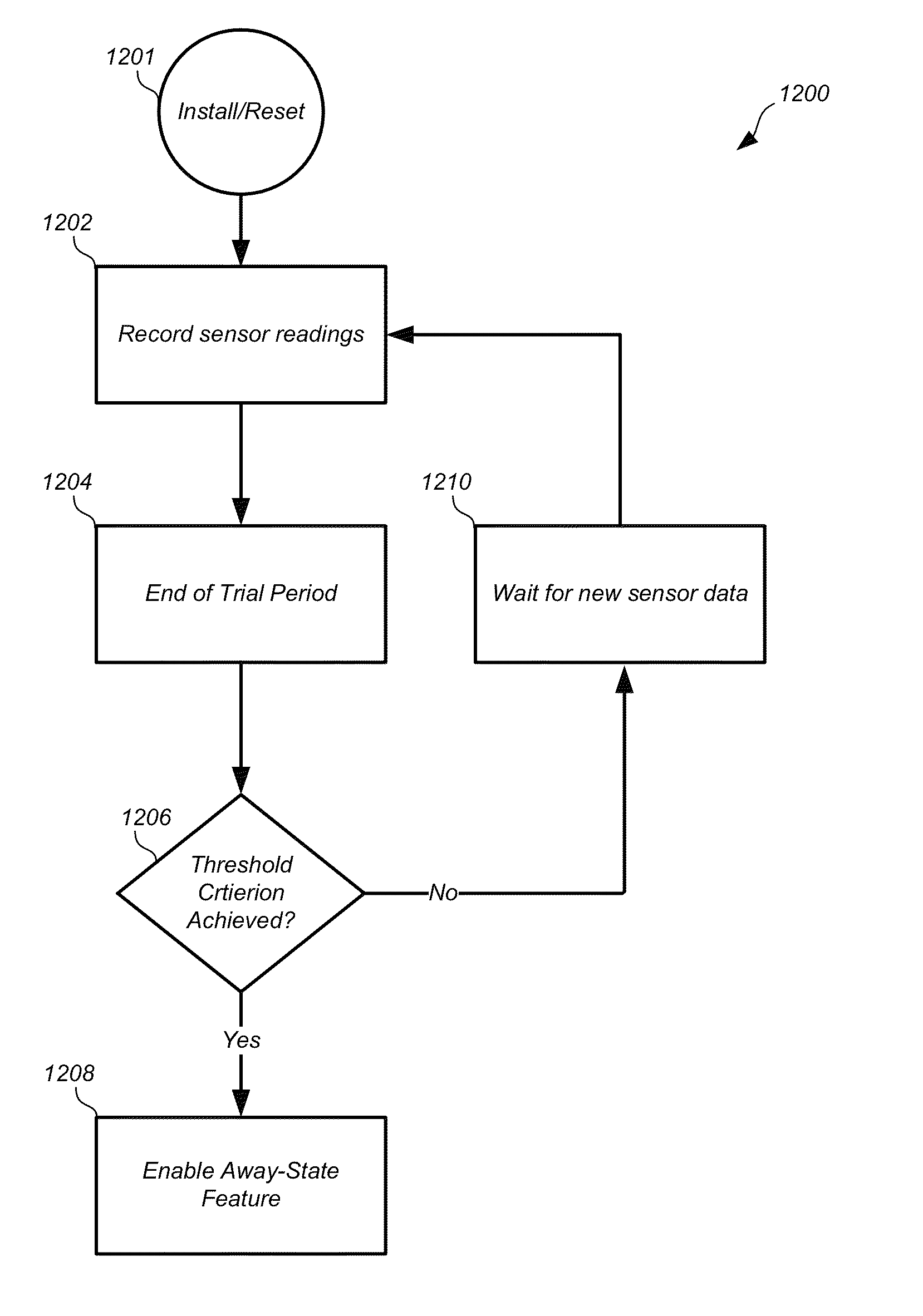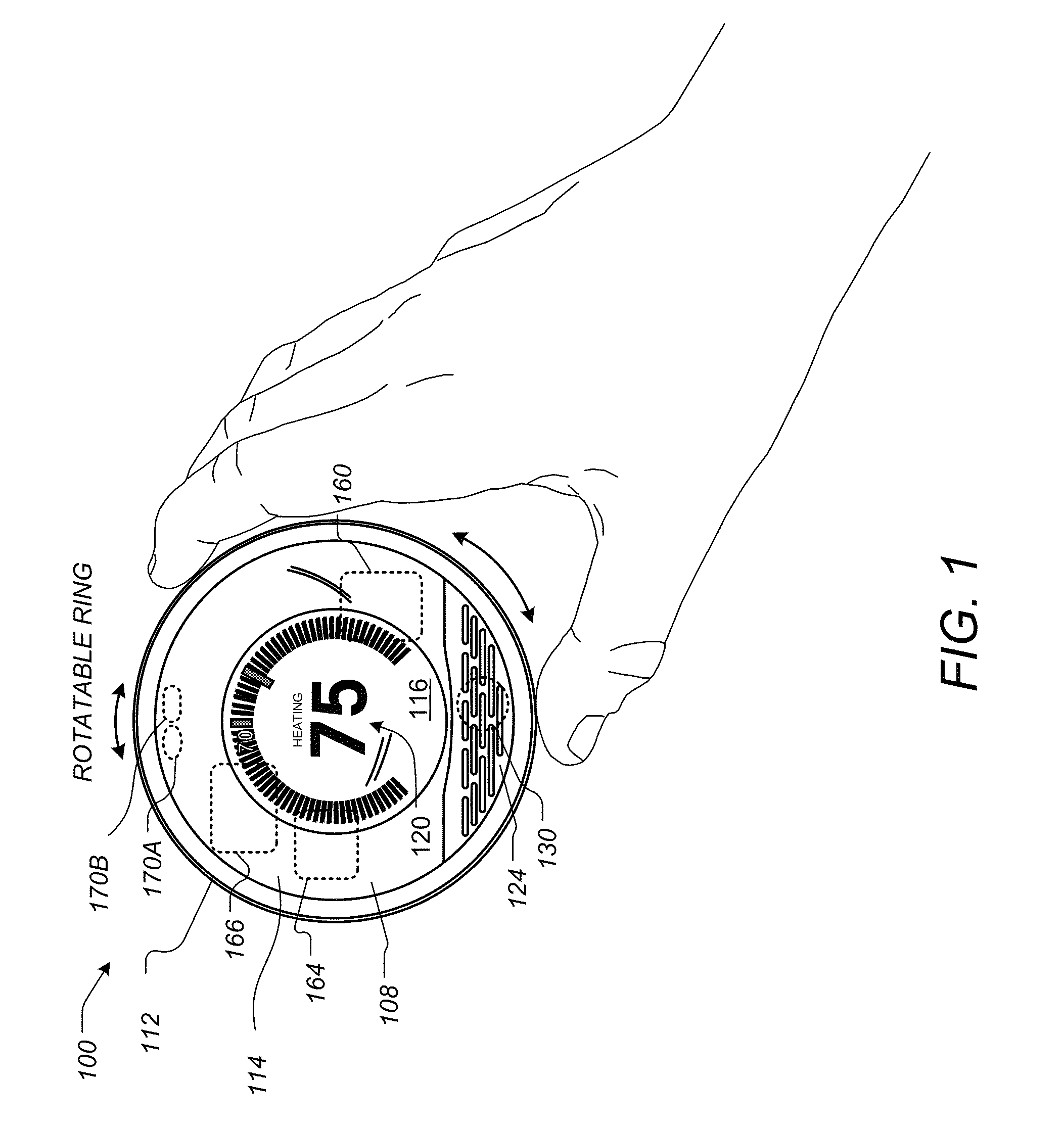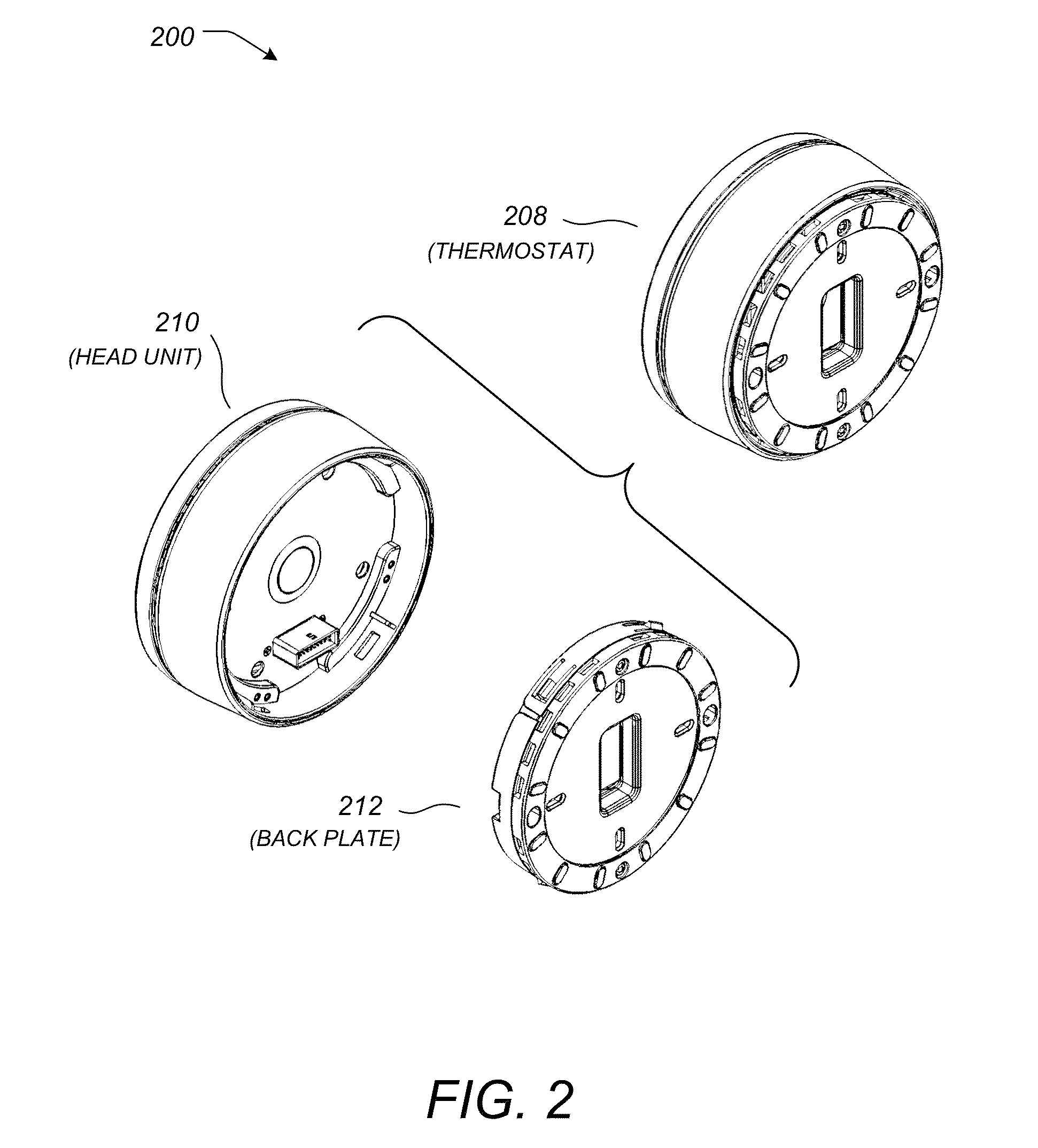Smart-home device that self-qualifies for away-state functionality
a smart-home device and functionality technology, applied in the direction of program control, heating types, instruments, etc., can solve the problems of many users not performing or very rarely performing these tasks, schedules that do not accurately reflect the usual behavior of occupants, and deviations from usual behavior
- Summary
- Abstract
- Description
- Claims
- Application Information
AI Technical Summary
Benefits of technology
Problems solved by technology
Method used
Image
Examples
Embodiment Construction
[0029]The subject matter of this patent specification further relates to the subject matter of the following commonly assigned applications, each of which is incorporated by reference herein: U.S. Ser. No. 13 / 269,501 filed Oct. 7, 2011; International Application PCT / US12 / 00007 filed Jan. 3, 2012; U.S. Ser. No. 13 / 632,070 filed even date herewith and entitled, “Automated Presence Detection and Presence-Related Control Within An Intelligent Controller;” and U.S. Ser. No. 13 / 632,112 filed even date herewith and entitled, “Adjusting Proximity Thresholds for Activating a Device User Interface.” The above-referenced patent applications are collectively referenced herein as “the commonly-assigned incorporated applications.”
[0030]In the following detailed description, for purposes of explanation, numerous specific details are set forth to provide a thorough understanding of the various embodiments of the present invention. Those of ordinary skill in the art will realize that these various e...
PUM
 Login to View More
Login to View More Abstract
Description
Claims
Application Information
 Login to View More
Login to View More - R&D
- Intellectual Property
- Life Sciences
- Materials
- Tech Scout
- Unparalleled Data Quality
- Higher Quality Content
- 60% Fewer Hallucinations
Browse by: Latest US Patents, China's latest patents, Technical Efficacy Thesaurus, Application Domain, Technology Topic, Popular Technical Reports.
© 2025 PatSnap. All rights reserved.Legal|Privacy policy|Modern Slavery Act Transparency Statement|Sitemap|About US| Contact US: help@patsnap.com



